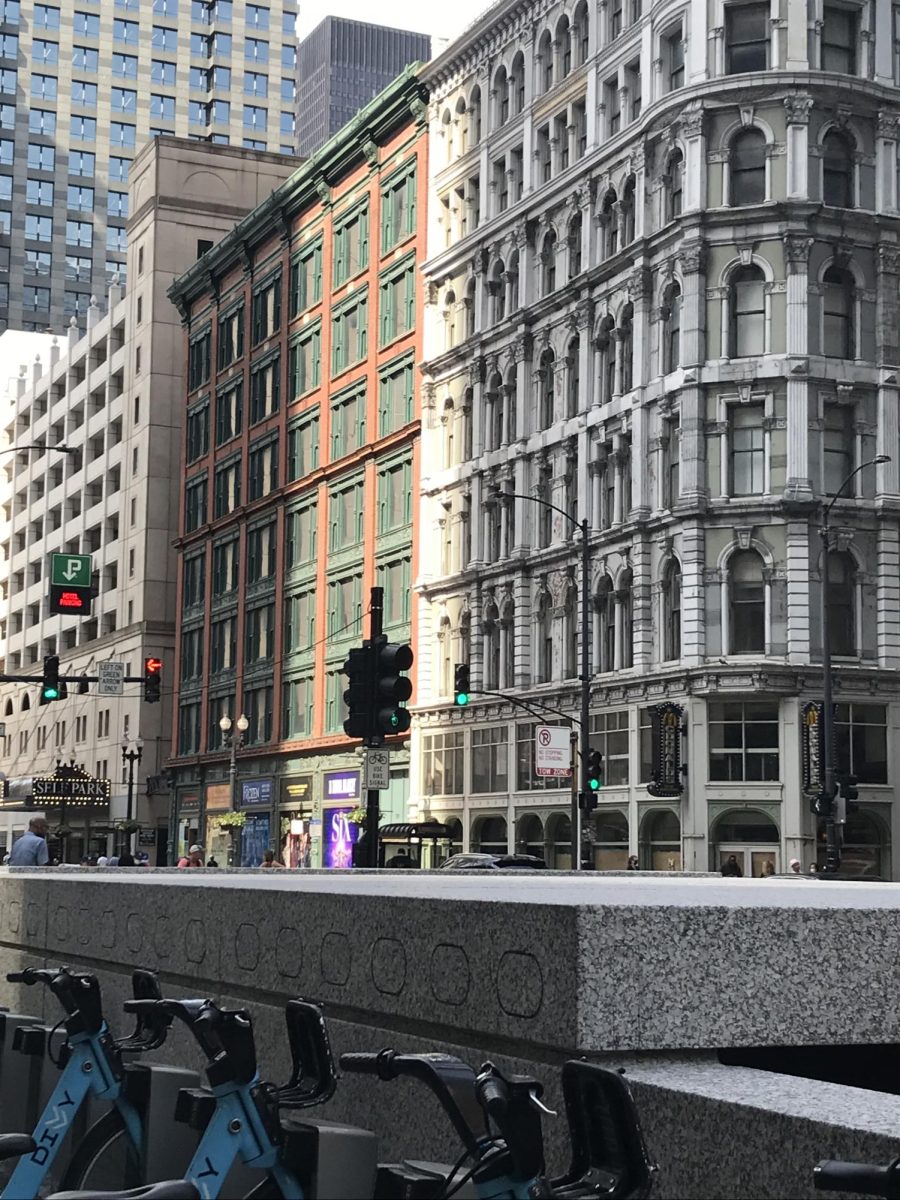Seeing the gorgeous Chicago skyline can evoke a feeling of wonder, begging the question: how were buildings like these across the country made? Or, more importantly, were they sustainably built?
Sustainability in architecture has become increasingly more important in recent years as the world continues to change and develop. Sustainable, or green, architecture is designing with the planet in mind, using materials that produce no or minimum CO2 emissions, energy efficient designs and incorporating the environment and green spaces to the fullest extent. Today, there has been more emphasis on sustainability than ever before. Design Director of Lothan Van Hook DeStefano Architecture Avram Lothan explains the shift towards sustainable architecture.
“With the last couple of decades of global warming, there is heightened emphasis on energy efficiency, lifestyle efficiency and reducing carbon use in both systems and construction,” Lothan said.
According to Scenario Architecture’s History of Sustainable Architecture, during the industrial revolution and as globalization became more common, buildings began to be constructed with materials from across the earth for a low cost. Materials were mass produced, and most builders left the idea of sustainability to accommodate the growing population. Due to this, the amount of CO2 emissions and waste created have increased significantly. Currently, communities within the field of architecture continue to forge a path for sustainability. Different standards and regulations have formed a guide for architects. It is difficult for architects to begin designing green when there are so many paths to take.
“The standards keep changing. A decade ago, a sustainable project was LEED certified, period. Now, there are all different standards you can follow, Net – 0, Passive House, BREAM, among others,” Lothan said.
A significant challenge in sustainability is reducing carbon footprint and waste in general, especially with the impending threat of global warming. According to the text “New Carbon Architecture: Building to Cool the Planet” by Bruce King, many common materials such as concrete have large carbon emissions released during extraction, transportation and manufacturing. A common way to reduce the carbon footprint in architecture is recycling. Many recycled materials include drywall, carpet and steel. Another way firms work with the environment in mind is by utilizing digital resources. John DeSalvo, Principal and Founder of DeSalvo Florian Architects describes how his firm works digitally.
“Within our actual office space, we are an architectural firm that does most of our work digitally. We produce little trash as paper printouts are rarely done in house,” DeSalvo said.
The largest issue preventing more green buildings is the cost, as high costs lead to most clients and builders choosing unsustainable materials.
“Actual upfront costs of energy saving products are most always higher than conventual and commonly used products … take geothermal heating, a very efficient and low-cost way of heating a building, but the up front or initial costs to install the system are prohibitive to most private or residential owners. They are not going to stay on the home for as long as the system starts paying for itself,” DeSalvo said.
An example of green architecture being implemented recently is living walls: insulations of plants attached to walls. According to the GSA, they work to improve air quality and reduce heat loss from buildings by around 30%. Similarly, green roofs are gardens planted on top of roofs. They add an extra layer of insulation, which reduces the energy needed to heat and cool the building as well as reducing CO2 levels in general. As stated by the GSA, as of 2021, there were two-million square feet of green roofs. They have become increasingly popular because they are good for the environment and decrease cost and energy usage in a building. It is a fairly easy solution to the pressing issue of the overuse of energy.
“The world has realized that the energy sources we use today have to be renewable and sustainable. Even more, we have to use less energy,” DeSalvo said.













